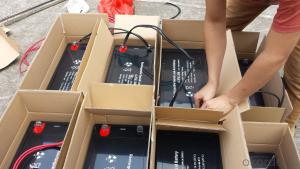Hybrid Solar Inverter Diagram
Hybrid Solar Inverter Diagram Related Searches
Solar Power Inverter Diagram Solar Panel Inverter Diagram Hybrid Solar Inverter Solar Hybrid Inverter Hybrid Solar Inverter System Solar Inverter Hybrid Hybrid Solar Power Inverter Inverter Solar Hybrid Solar System Hybrid Inverter Hybrid Inverter Solar Solar Hybrid Inverter System Hybrid Inverter Solar System Inverter Hybrid Solar Solar Inverter Size Chart Hybrid Inverter Solar Panel Hybrid Solar Inverter On Grid Smart Hybrid Solar Inverter Solar Hybrid Inverter On Grid Solar Inverter Drawing Buy Hybrid Solar Inverter Hybrid Solar Charger Inverter Hybrid Solar Inverter Price Solar Panel Hybrid Inverter On Grid Hybrid Solar Inverter Hybrid Solar Inverter 3 Phase Best Hybrid Solar Inverter Solar Inverter Tutorial Best Solar Hybrid Inverter On-Grid Hybrid Solar Inverter Hybrid Inverter Charger SolarHybrid Solar Inverter Diagram Supplier & Manufacturer from China
Hybrid solar inverters are advanced power conversion devices that combine the functions of both solar charge controllers and inverters. These devices are designed to convert the direct current (DC) generated by solar panels into alternating current (AC) that can be used by household appliances and fed back into the grid. They also manage the charging and discharging of batteries to ensure optimal energy storage and usage.The hybrid solar inverter is widely used in various applications, such as residential, commercial, and off-grid systems. It is particularly beneficial in areas with fluctuating power supply or where backup power is essential. These inverters can seamlessly switch between grid-tied and off-grid modes, ensuring a continuous power supply to the connected devices. They are also used in remote locations where grid connection is not feasible, providing a reliable source of electricity through solar power.
Okorder.com is a leading wholesale supplier of hybrid solar inverters, offering a vast inventory of high-quality products to cater to the diverse needs of customers worldwide. With a commitment to providing reliable and efficient solutions, Okorder.com ensures that the hybrid solar inverters they supply meet the highest industry standards. Their extensive range of products allows customers to choose the most suitable inverter for their specific requirements, making them a trusted partner for those looking to harness the power of solar energy.
Hot Products


















































